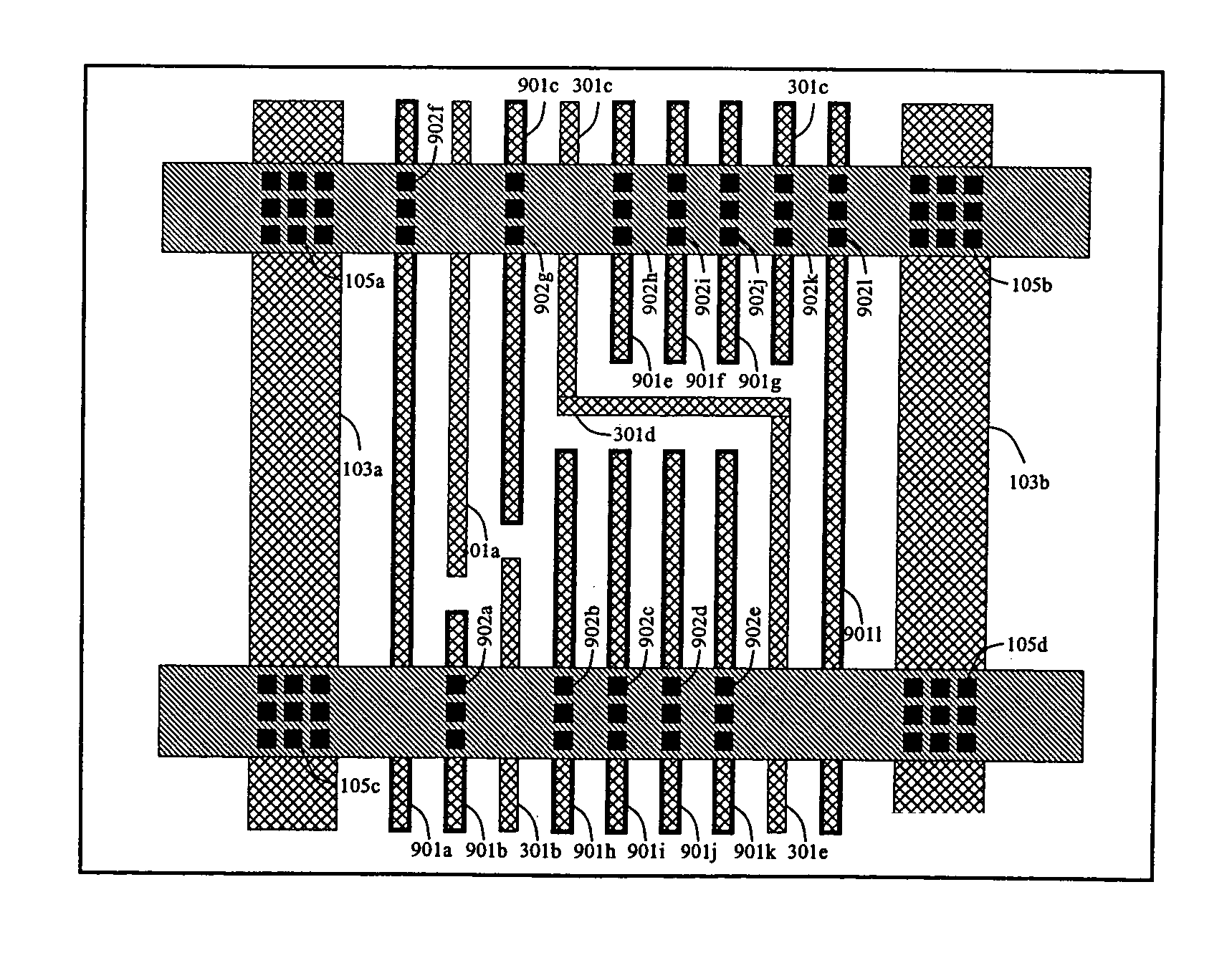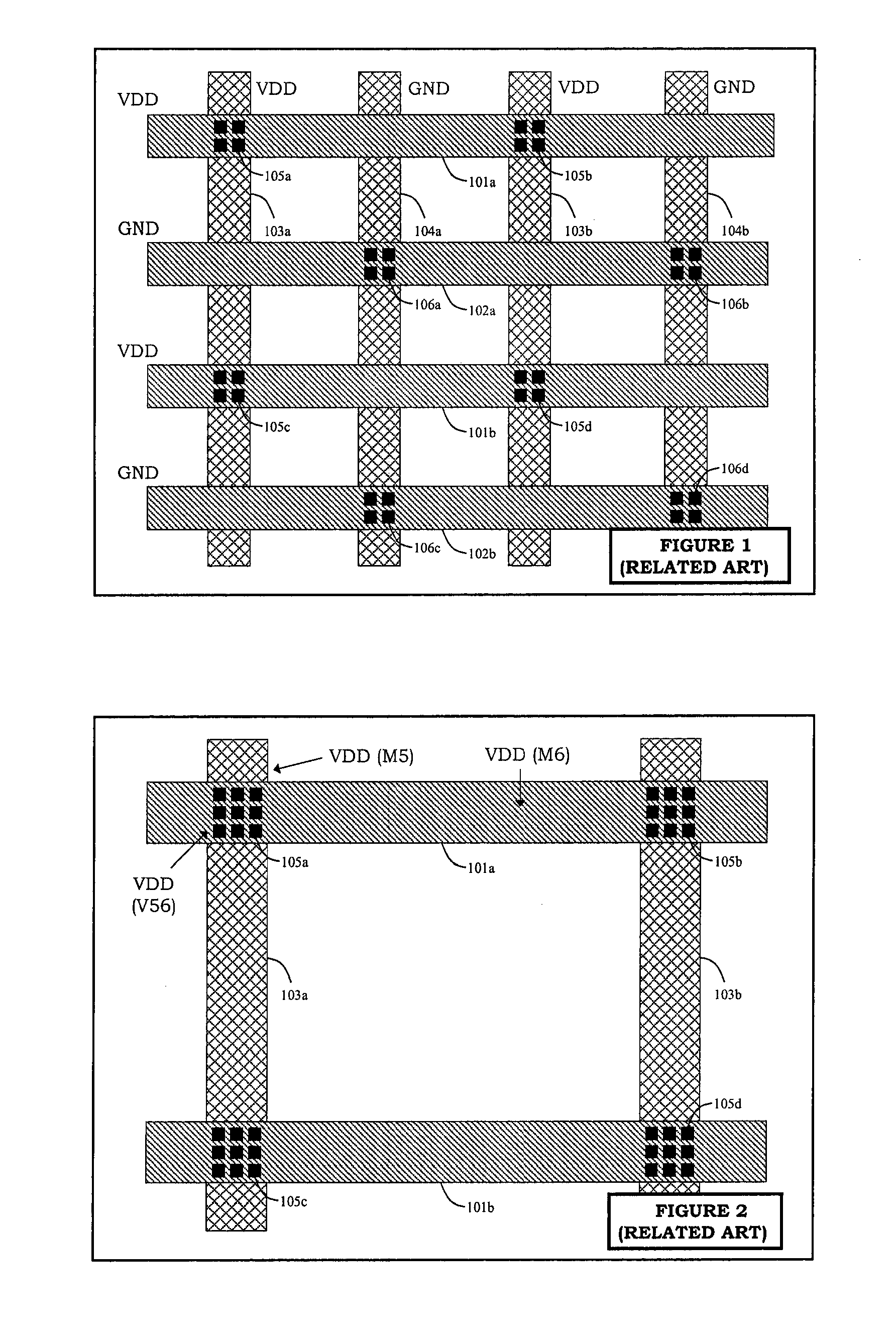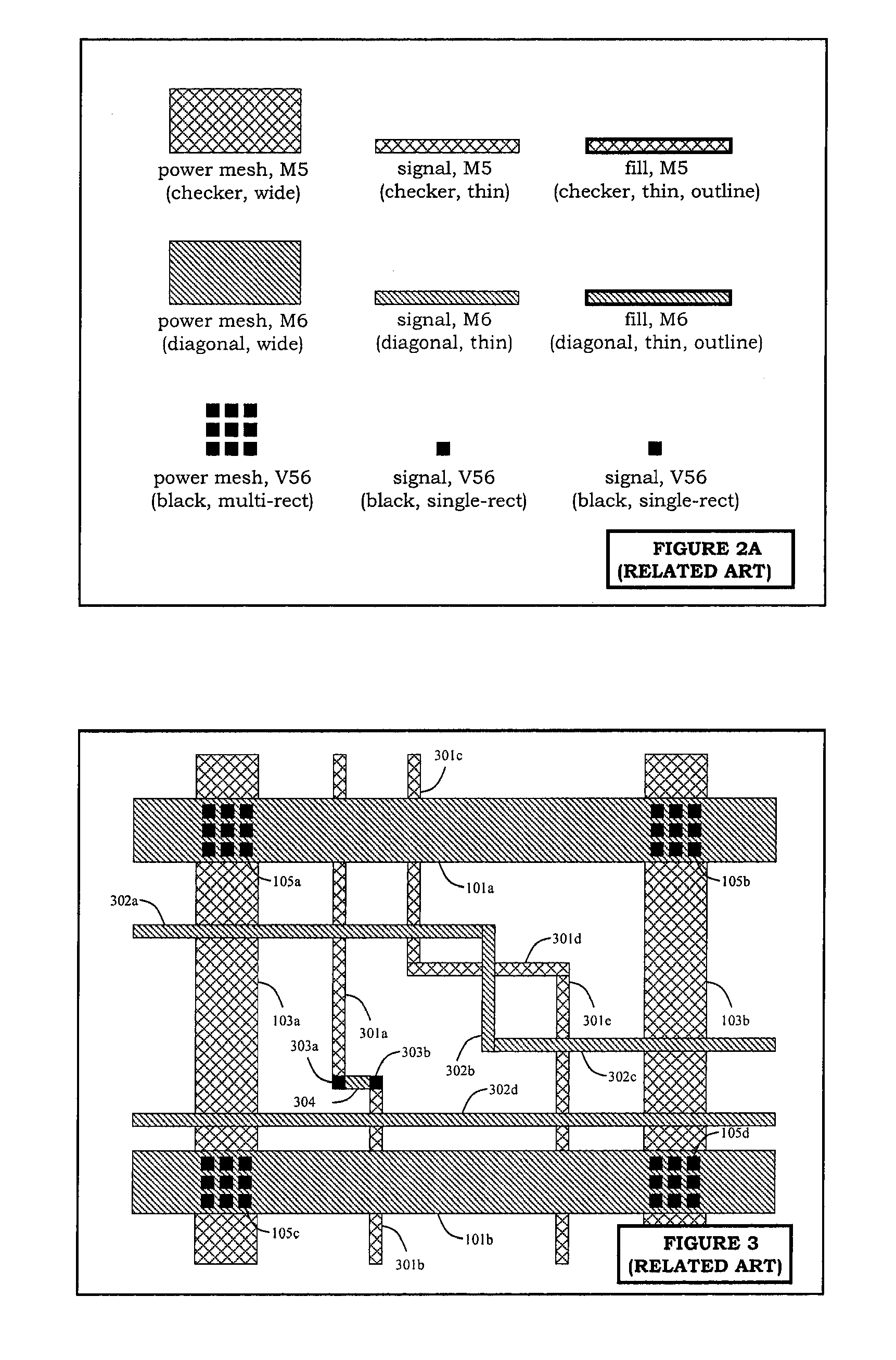Redundantly tied metal fill for IR-drop and layout density optimization
a technology of layout density and metal fill, applied in the direction of cad circuit design, semiconductor/solid-state device details, instruments, etc., can solve the problems of redundant connection of metal fill geometries and seek partially redundant connectivity, so as to reduce the voltage drop in the power mesh, avoid excessive increase in the number of metal fill, and reduce the effect of ir drop
- Summary
- Abstract
- Description
- Claims
- Application Information
AI Technical Summary
Benefits of technology
Problems solved by technology
Method used
Image
Examples
Embodiment Construction
[0055]A preferred embodiment of the present invention is now described with reference to the figures where like reference numbers indicate identical or functionally similar elements and where depicted elements are not necessarily shown to scale. Also in the figures, the left most digit(s) of each reference number typically correspond(s) to the figure in which the reference number is first used.
[0056]Integrated devices are interconnected in electronic circuits with each other using metal layers in horizontal planes above the integrated devices. These metal layers (or levels), up to twelve or more, are referred to M1, M2, M3, etc. and facilitate signal routing and power distribution. The intermediate layers between metal layers are called via layers, and are referred to as V12, V23, V34, etc. For example, V12 is between M1 and M2. Those skilled in the art will recognize that power mesh conductors, signal conductors and fill metals described herein can be made of conductive material, f...
PUM
 Login to View More
Login to View More Abstract
Description
Claims
Application Information
 Login to View More
Login to View More - R&D
- Intellectual Property
- Life Sciences
- Materials
- Tech Scout
- Unparalleled Data Quality
- Higher Quality Content
- 60% Fewer Hallucinations
Browse by: Latest US Patents, China's latest patents, Technical Efficacy Thesaurus, Application Domain, Technology Topic, Popular Technical Reports.
© 2025 PatSnap. All rights reserved.Legal|Privacy policy|Modern Slavery Act Transparency Statement|Sitemap|About US| Contact US: help@patsnap.com



